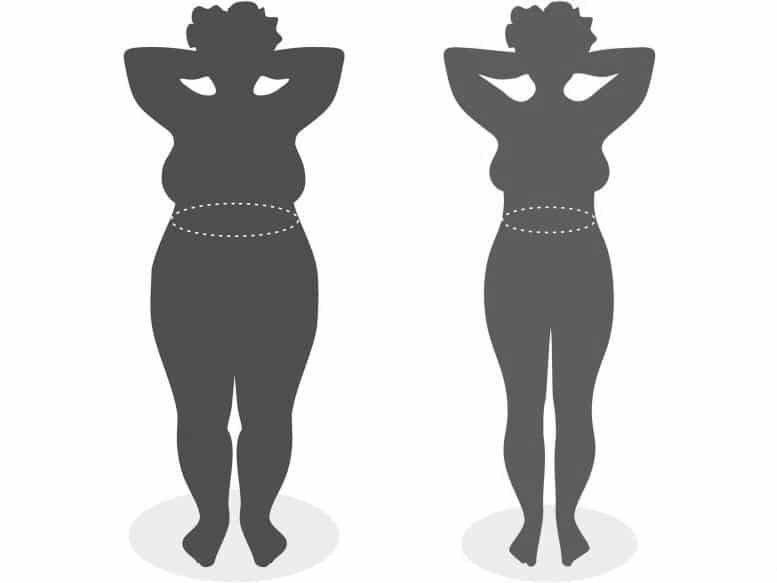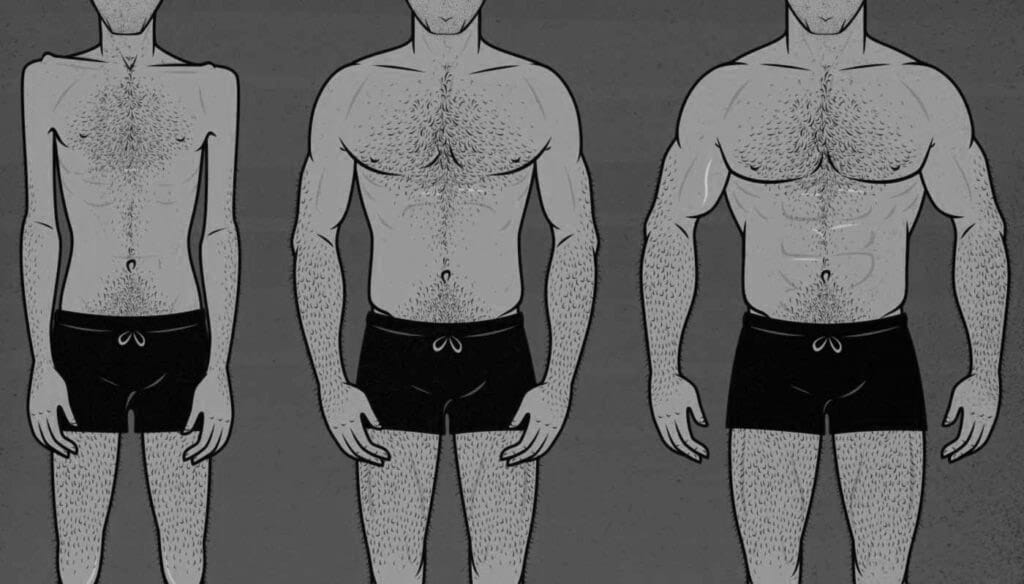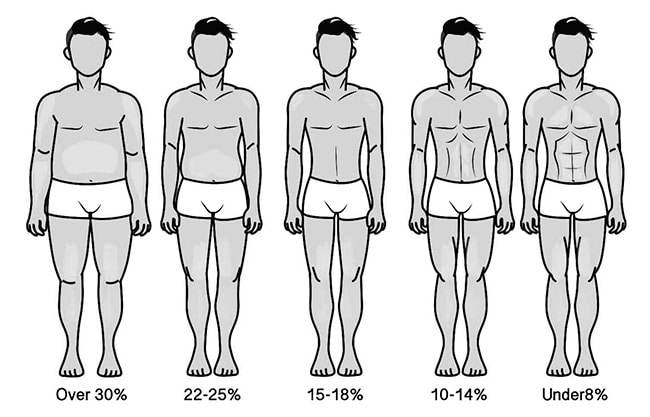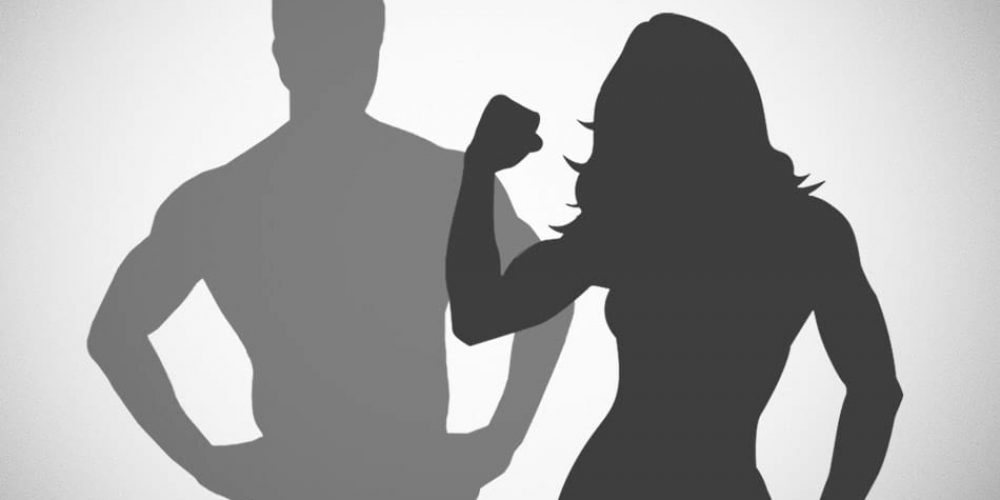Weight loss VS Muscle gain: is it one of the other?
If you ask someone why they are training or starting to exercise, chances are they will tell you one of these: to lose weight, or to gain muscle. They are the most common goals most people join a gym to achieve.
They are two very different processes the body goes through, so different that they may seem total opposites to the untrained eye. But even when most people don’t believe this, they can coexist. Today, you will learn how. More specifically, you’ll learn about the nutrition behind them.
How weight loss works
Weight loss is achieved through calorie deficit. Calories are units of energy, the energy that makes your body function. An average human needs 2,400 calories per day (This number varies from person to person). If that human consumes 2,800 calories in a day, the 400 extra calories that weren’t burned are stored as body fat (reserves of energy).
Please check out our blog “Create A Calorie Deficit In 2 Steps” for thorough knowledge about calorie deficit.

If that same human consumes 2,400 and burns 2,600 or eats less than 2,400; the extra calories (energy) the body needs to keep functioning are taken from the body fat, making them lose weight.
Weight loss is a temporary process. No human can keep up with losing weight forever. At the same time, sustainable weight loss can only be achieved through healthy eating and exercising.
The nutrition behind weight loss
1 – Reducing the size of portions: eating less doesn’t mean starving. It can sometimes mean reducing the size of your portions, especially when you’re eating more than what you need.
2 – Choosing better-quality calories: Calories are an arbitrary measurement, and they look different from food to food. For example, 200 calories look like a bowl of Doritos chips, but also an apple and a punch-size portion of almonds also equal 200 calories. Which one do you think your body will process better?
Weight loss is also a matter of making smarter decisions about what you eat.
3 – Replacing refined carbs with complex carbs: Refined carbs are the most delicious ones: bread, donuts, pasta, everything that contains white flour and a lot of sugar. Replacing them with complex carbs, like whole grains and vegetables not only gives you the same energy with less calories, they also take more time to digest, keeping you satisfied for longer so you don’t eat as often.
4 – Add protein, healthy fats and vegetables to every meal: protein will protect your muscle mass while you’re losing weight, as well as making you feel full. Vegetables are great sources of nutrients that don’t add many calories, so you can have them in large quantities. Healthy fats are there to maintain your hormonal balance and help your metabolism.
How muscle gain works
Muscle gain is a more complex process, so we’ll try to explain it as simply as possible. It’s also important to know that muscle gain is different for men and women.
To gain muscle, you need to follow some formulas. The first one is knowing that muscle gain is done in the gym and in the kitchen. You can’t build muscle if one of those two is not in the equation.

Then, you need to know how many calories you burn in rest mode (how fast your body burns fat), this is called Basal Metabolic Rate (BMR). You can know this number with the help of an expert in nutrition and body composition, with a Body Composition Monitor.
Once you know this number, you need to eat more than this. Why? Because muscles are like engines, they are constantly consuming energy, and energy is equal to calories. The more your muscles grow, the more energy they consume, the more energy you need in your body.
The nutrition behind muscle gain
1- Protein, protein, protein: Muscles are made out of protein and water. When you exercise them, they break down and their recovery process makes them stronger and bigger. For this to happen correctly, you need a lot of protein in your body, because protein is what builds the muscle.
Foods like meat, chicken, turkey, eggs, soy beans, fish, whey protein are what you need. The amount will vary depending on everybody, and the best way to consume it is evenly distributed in every meal.
2 – Carbs are still important: Carbs are fuel, and you need that fuel that comes from carbs, so your body doesn’t touch the energy that’s reserved in your muscles.
3 – Healthy fats: healthy fats do the same function as they do in weight loss, they’re great for your hormonal balance and your metabolism.
Can you build muscles while losing weight?
If you look at them closely, they seem to be opposites. You need a deficit in order to lose weight, while you need to eat more as you’re building muscle. For several decades, we believed that you had to do one or the other, often making people lose weight first to build muscle after, or making them build muscle, gain weight, and then go through an intense calorie restriction to reveal the muscles.
However, things have changed, and achieving weight loss while building muscle mass is actually possible. This process is called body recomposition.

During this process, you’re focused on losing fat rather than weight. As with muscle gain it’s totally normal to gain more weight, your body image is the one that’s changing, because muscles take less space than fat. You can end up with a bigger weight in numbers, but with a thinner, more defined body.
It’s important to know that proper weight loss, as well as proper muscle gain, are slow processes, because the body takes an important amount of time to get used to the changing routines. This means you won’t see results in a few days, you will see them in months.
By recognizing this, you also need to know that body recomposition takes even more time, as you’re going through two processes that take a long amount of time by themselves. Long-time results in fitness are the healthiest ones, as well as the ones that last longer.
The nutrition of body recomposition
1 – Fat loss due to a small calorie deficit: a little calorie deficit combined with cardio exercises is what takes care of getting rid of body fat.
2 – Building muscle through a high in protein diet, combined with weight training
3 – Combining these two in a strategy called Calorie Cycling.
Calorie cycling: Consuming different amounts of calories, depending on the physical activity you will be making that day.
For this, you need to know your Calorie Maintenance Number, which is the number of calories you need for a regular day with no physical activity. With this number, you will:
- – Consume your Calorie Maintenance Number the days you will be doing cardio-vascular exercises, so there’s a slight calorie deficit that will burn your body fat without touching your muscles.
- – Consume more calories (around 10% to 15%) than your Calorie Maintenance Number the days you will be doing strength exercises. Always focusing those calories on proteins
- – Eating around 5% to 10% less calories than your Calorie Maintenance Number the days you won’t be doing any physical activity.









Comments 0